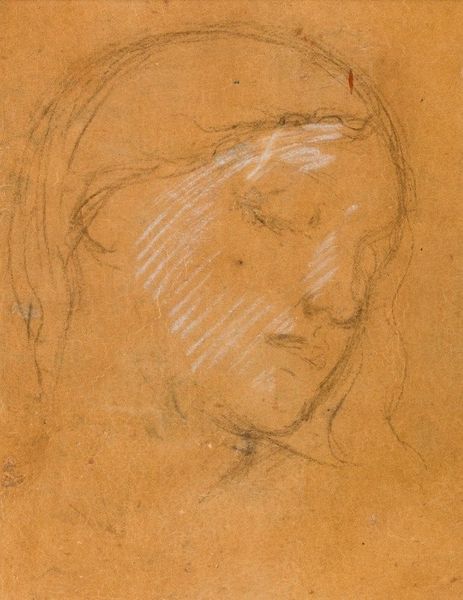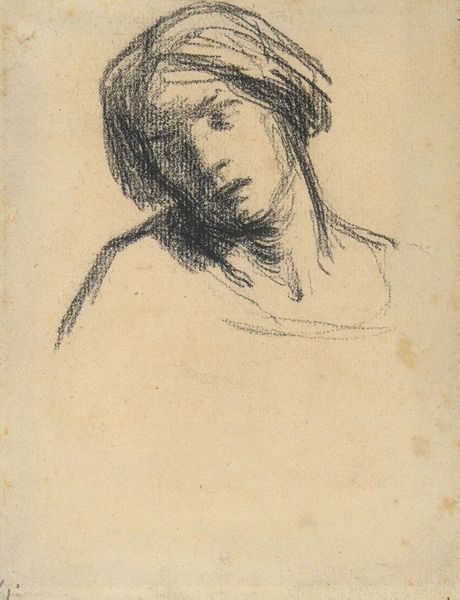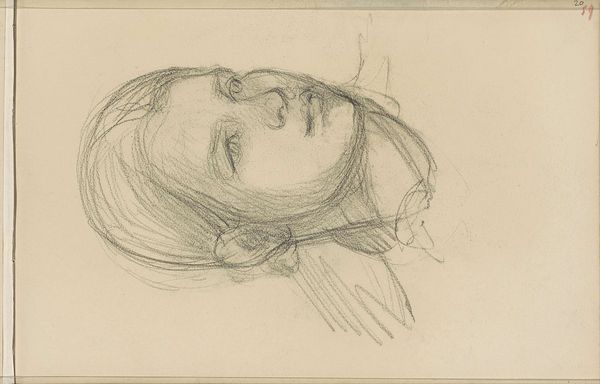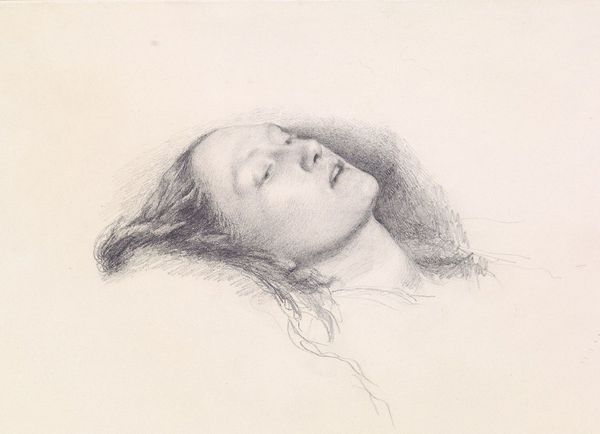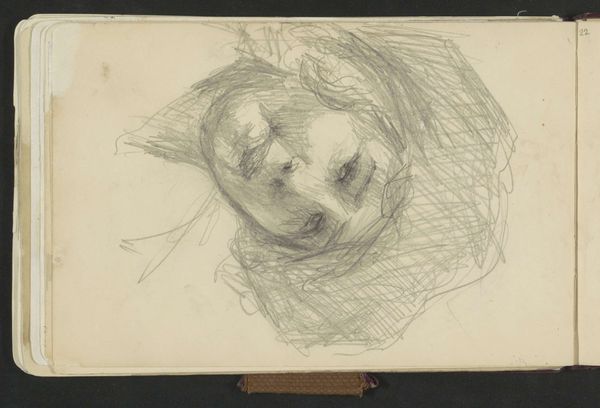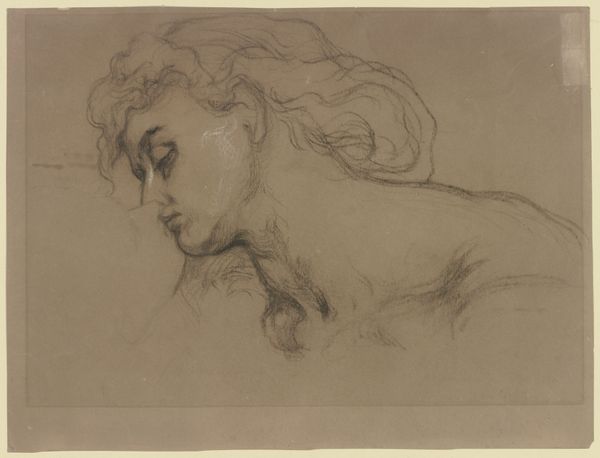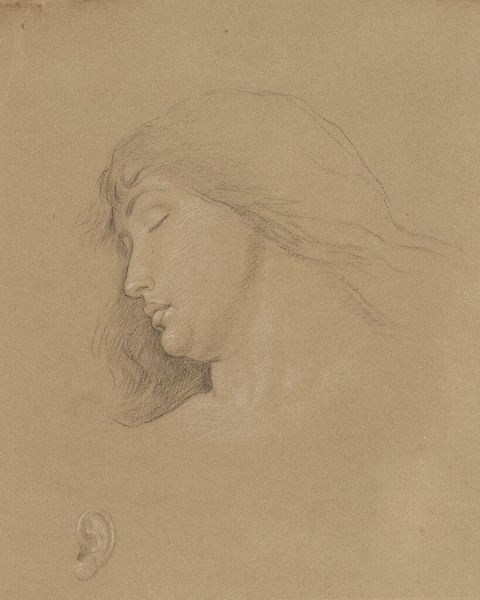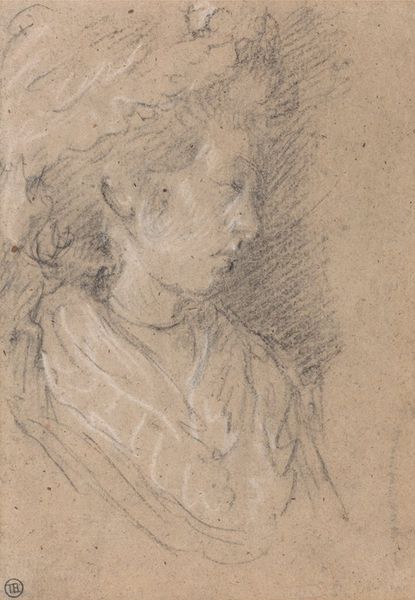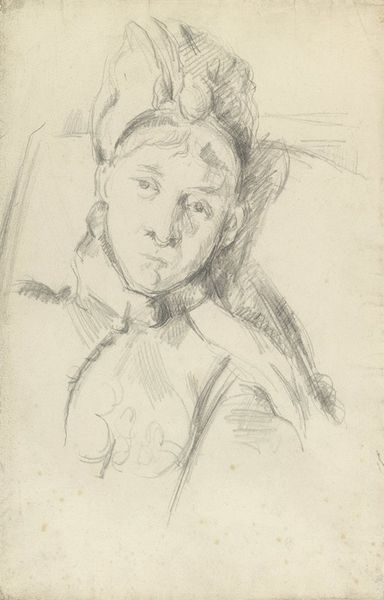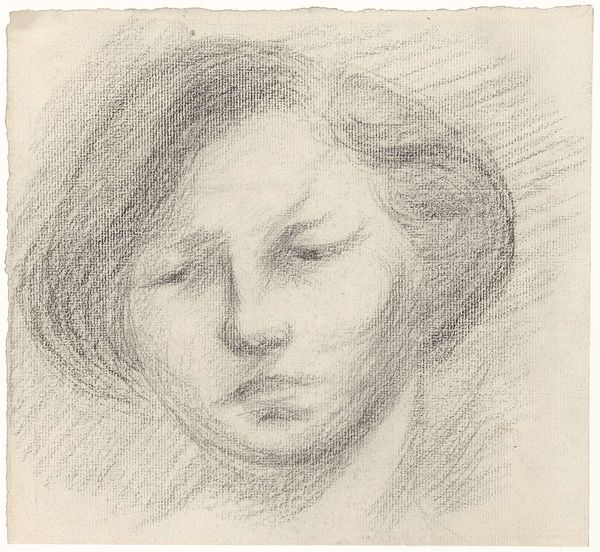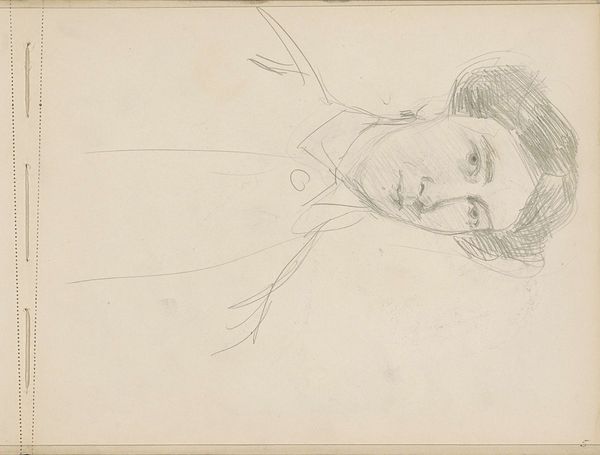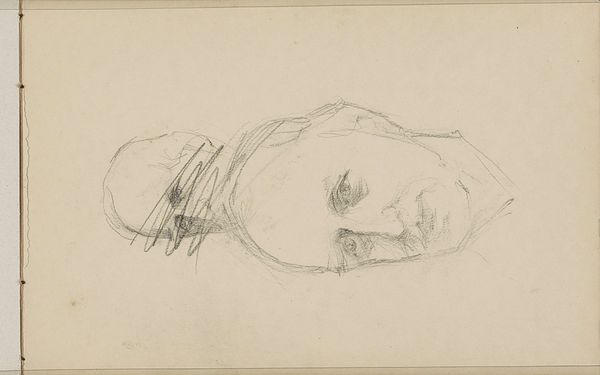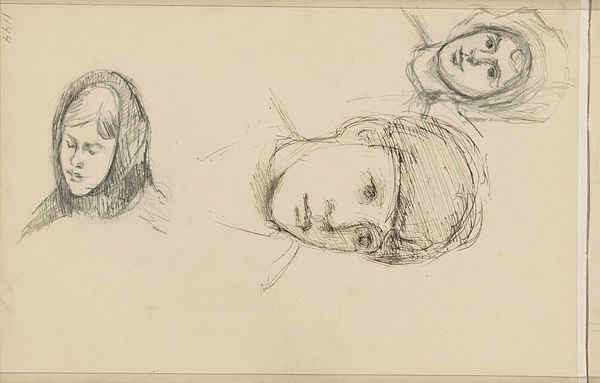
drawing, pencil
#
portrait
#
drawing
#
figuration
#
pencil
Copyright: Public Domain: Artvee
Editor: This is "Tête de femme," a pencil drawing by Narcisse-Virgilio Diaz. It feels very intimate, like a stolen moment. What stands out to you when you look at it? Curator: I see a poignant representation of the gaze, especially how it was often gendered and controlled in the 19th century. The averted eyes could signify demureness, but I wonder if it also suggests resistance to the male gaze and societal expectations. The sketch-like quality gives it a feeling of immediacy but also incompleteness, leaving her story unfinished, open to interpretation. How does that make you feel? Editor: I agree. The unfinished quality adds to that intimate feeling, almost as if we're catching a glimpse of something private. I’m also wondering how Diaz's identity as a French painter of Spanish descent might influence this piece? Curator: Exactly! We need to consider Diaz’s background. As a person of color in the French art world, he, perhaps more than others, understood marginalization. Was he reflecting the limited agency women had, particularly in portraiture, a genre so tied to wealth and status? Was he questioning it? Maybe this is a social commentary embedded in the visual language. Editor: That’s a great point. Seeing it that way gives the piece so much more depth. It becomes more than just a portrait, but a statement. Curator: Yes. Art can be a powerful form of communication. Consider how portraiture throughout history has reinforced specific social norms and hierarchies. Now, let’s question that legacy. It’s a process! Editor: Absolutely. It’s amazing how a simple sketch can reveal so much about the artist, the subject, and the society they lived in. Thanks! Curator: My pleasure! Every artwork is a product of its time and it demands us to be in continuous conversation.
Comments
No comments
Be the first to comment and join the conversation on the ultimate creative platform.
